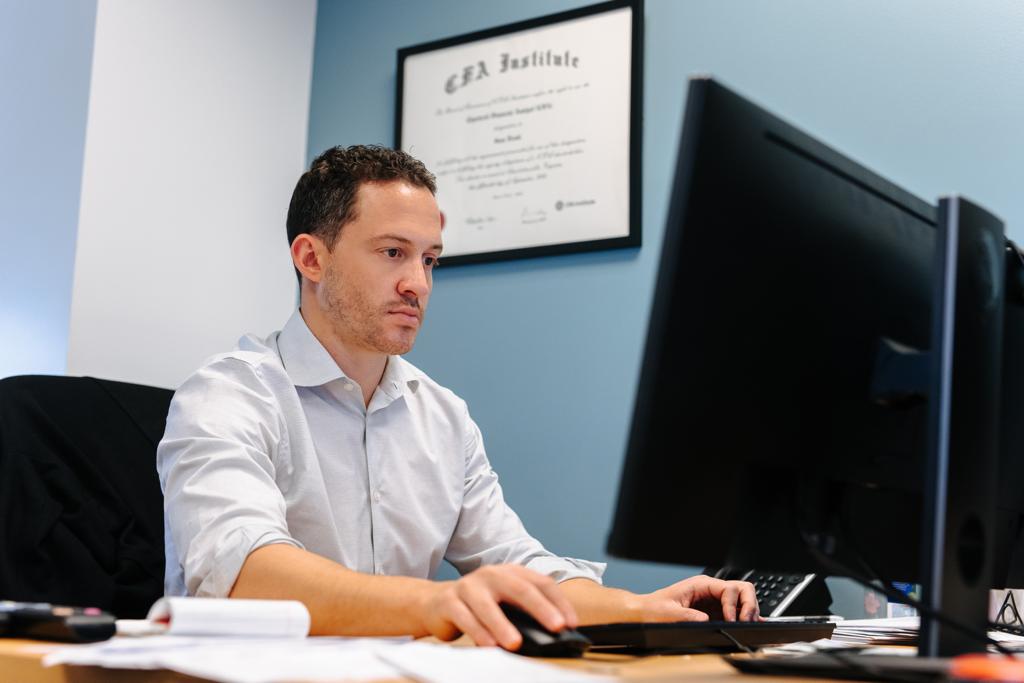Business
Sean Frank of Cloud Equity Group Shares Tips on Scaling a Small Business

Scaling a small business can be a challenge for entrepreneurs. Most businesses reach a plateau and their growth rates diminish and revenue begins to flatten. In this article, Sean Frank, a serial entrepreneur and founder of New York City-based Cloud Equity Group, offers insight on how entrepreneurs can successfully grow their business.
Cloud Equity Group is a strategic capital partner for tech-enabled business service providers. The firm has operational experience in cloud hosting, managed service, and digital marketing. Cloud Equity Group is a hands-on investor with a long history of scaling businesses with decelerating or negative growth rates.
Motivated and Competent Teams
People are the single most valuable asset of any business, especially when it comes to scaling. As Sean Frank puts it, “It’s impossible to do everything yourself. Working with a group of individuals who are as motivated as you are to see the business succeed improves the likelihood of success tremendously.”
It’s natural for an entrepreneur to have the mentality that they can do everything, or that they are needed to do everything. While this can work for a small company, it’s not a productive mindset and it inevitably leads to a bottleneck in a company’s growth trajectory. It can be difficult at first for an entrepreneur to rationalize paying a competitive salary to offload some of their work, and it can be tempting to try to leverage “cheap labor;” however, hiring strong individuals who add value to the business, and align their interests with those of the founder, is an integral part of growing any business. The CEO of a company doing $1M in revenue is likely running and managing most of the daily operations of the business. In order to grow to $10M+ in revenue, the CEO needs to effectively delegate much of the day-to-day management to managers so that they can focus on strategic planning and growth initiatives. It’s a matter of the best use of the entrepreneur’s time. If something can be handled by someone else, particularly if it does not directly translate into growth or value creation, then it should be delegated.
Constantly Adapt the Produce or Service
Businesses are ever-adapting in response to changes in technology, economics, and politics. It’s imperative to be mindful of these changes and to adapt accordingly. As Sean explains, “stale businesses that don’t adapt inevitably die.”
Cloud Equity Group aggressively seeks and incorporates feedback both from customers and employees on how to improve its service offerings. “In my experience,” shares Sean, “company-loyalty improves tremendously when employees or customers recognize that you care. In competitive industries, where customers can easily switch to other providers, it’s vital to show that their feedback is not only welcomed but also acted upon. These two steps go a long way to keep customers happy and for business growth.”
Partnering with Strategic Capital
It can be very tempting for entrepreneurs to accept capital into their business as soon as it becomes available. On one hand, a liquidity event could be seen as diminishing the success available to the entrepreneur. On the other, it may advance short-term funding needs that will, ideally, project the company forward. Accepting capital from an investor is a long-term commitment and it’s important to nurture a strategic capital partner as opposed to accepting any capital that’s available.
For example, a capital partner that’s willing to offer what seems like a lot of money for 50% of your business may be appealing in the short term, however, if the partner can’t help a business double in size, it’s a net loss. Choosing a capital partner that believes in your business, helps solve inefficiencies, and adds value is key. Sean Frank proposes that “it’s always better to have a small piece of a large pie than a large piece of a small pie — especially if that large pie continues to grow.”
Business
Hustle Division Evolves into HD AI Lab Group: A New Powerhouse in AI-Driven Marketing

Los Angeles, CA — May 8th — Hustle Division, the award-winning agency behind Gold and Platinum campaigns for brands like PrettyLittleThing and Zootiez by Future — and legendary artists like 50 Cent, Snoop Dogg, Warren G, Normani, Saweetie, Tyga, YG, and will.i.am — is officially rebranding into HD AI Lab Group.
This major evolution is led by E.G., a proud Latino entrepreneur, who also owns Zooly.ai, a fast-growing AI company backed by major investors and already trusted by top brands across the NBA, NHL, and entertainment.
HD AI Lab Group brings together creative energy and real AI innovation to help brands, artists, and businesses grow in today’s world.
“This isn’t just a rebrand — it’s the evolution of everything I’ve built, now powered by real AI to shape the future of marketing,” said E.G., Founder & CEO of HD AI Lab Group.
Stay tuned and follow the journey on the newly revamped Instagram: @hustledivision
Media Contact:
info@hustledivision.com
-

 Tech4 years ago
Tech4 years agoEffuel Reviews (2021) – Effuel ECO OBD2 Saves Fuel, and Reduce Gas Cost? Effuel Customer Reviews
-

 Tech6 years ago
Tech6 years agoBosch Power Tools India Launches ‘Cordless Matlab Bosch’ Campaign to Demonstrate the Power of Cordless
-

 Lifestyle6 years ago
Lifestyle6 years agoCatholic Cases App brings Church’s Moral Teachings to Androids and iPhones
-

 Lifestyle4 years ago
Lifestyle4 years agoEast Side Hype x Billionaire Boys Club. Hottest New Streetwear Releases in Utah.
-

 Tech6 years ago
Tech6 years agoCloud Buyers & Investors to Profit in the Future
-

 Lifestyle5 years ago
Lifestyle5 years agoThe Midas of Cosmetic Dermatology: Dr. Simon Ourian
-

 Health6 years ago
Health6 years agoCBDistillery Review: Is it a scam?
-

 Entertainment6 years ago
Entertainment6 years agoAvengers Endgame now Available on 123Movies for Download & Streaming for Free
